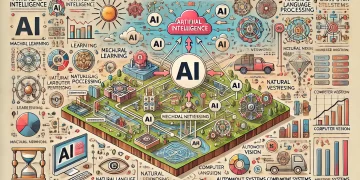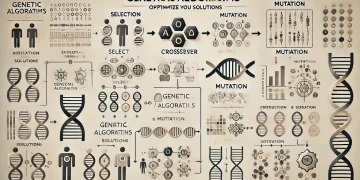In everyday life, many situations don’t have clear-cut answers that are simply right or wrong. Instead, they often involve multiple factors to consider, and the outcomes can vary depending on different circumstances. For example, in medical diagnosis, patients describe their symptoms in ways that are often not straightforward. When asked about issues like fatigue or headaches, the answers are rarely just “yes” or “no.” People use terms like “sometimes,” “usually,” and “rarely” to express how often they experience symptoms. Similarly, the intensity of symptoms, like pain, can be described as “mild,” “moderate,” “severe,” or “intense,” but these descriptions vary greatly from one person to another. These variations cannot be easily captured by a system that only accepts binary “present” or “absent” answers. This is where fuzzy logic comes in, offering a more adaptable way to handle uncertainty and imprecision.
Fuzzy logic, developed by Lotfi Zadeh in the 1960s, is a mathematical framework designed to deal with uncertainty, vagueness, and imprecision. Unlike classical logic, which operates on a strict true/false basis, fuzzy logic allows for values between “completely true” and “completely false.” This makes it particularly useful for situations where answers aren’t black and white, but involve a range of possible truths.
In fuzzy logic, concepts like “tall” or “short” aren’t just true or false—they belong to fuzzy sets. For instance, height is a continuum, so someone who is 6 feet tall could be considered both “tall” and “not tall” to varying degrees. Similarly, fuzzy logic allows for a range of values, so a person who is 6’1” might be slightly tall, but not necessarily extremely tall.
Let’s consider the example of height. Classical logic would work by drawing a clear line: anyone 6’2” or taller is considered “tall,” and anyone shorter than that is considered “not tall.” But in reality, this isn’t quite as simple. For instance:
- John is 6’0”. According to classical logic, he would not be considered “tall.”
- Emma, who is 6’2”, would be considered “tall.”
- But what about Luke, who is 6’1”? Traditional logic would categorize him as “not tall,” even though he’s very close to the threshold of 6’2”.
In fuzzy logic, Luke could be considered slightly tall, not “completely tall,” but certainly more “tall” than someone who is 5’5″. It recognizes that height isn’t just binary—there are degrees of being tall, and this allows for more nuanced decision-making.
Now, let’s consider a business example: loan approval. In a traditional system, classical logic might operate with strict rules like this:
- If someone makes at least $80k a year, has worked for at least 2 years, and can make a down payment, they qualify for the loan.
While this may work for some cases, it becomes problematic when factors don’t neatly align with these rigid thresholds. For example, consider a borrower who makes $100k a year, but has worked for only 23 months and 20 days. According to classical logic, they would be rejected because they don’t meet the 2-year employment requirement, even though they meet other crucial criteria like having a down payment and a strong income.
However, with fuzzy logic, this person could still be considered almost eligible for the loan. Fuzzy logic would evaluate their income and adjust for the fact that they’re just short of the 2-year mark, classifying them as “more than moderately eligible.” This nuanced decision-making approach acknowledges the complexities in real-world situations.
Conclusion
Fuzzy logic offers a more flexible and realistic way to make decisions. By considering a range of factors and evaluating them with varying degrees of truth, fuzzy logic makes decisions that better reflect how humans think and act in the real world. Whether it’s for loan approvals, autonomous driving, or other business applications, fuzzy logic provides a way to manage complex decisions with more nuance and accuracy, leading to better and more informed outcomes.



































